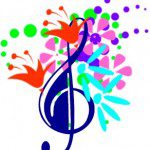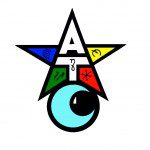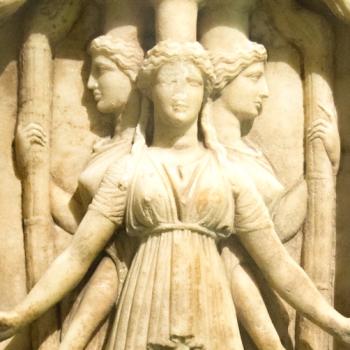I have always defined myself as a polytheist and left it at that. I think that the magick and mystery of the gods is so above my mortal comprehension that breaking my polytheism down into sub-categories is a self defeating exercise. I worship the gods as distinct beings, and have always thought of them in that light. I also don’t discount the idea that they might all be linked in some sort of way. Every living thing on this planet is linked genetically (we share some of our DNA with trees for instance) why would the gods be any different?
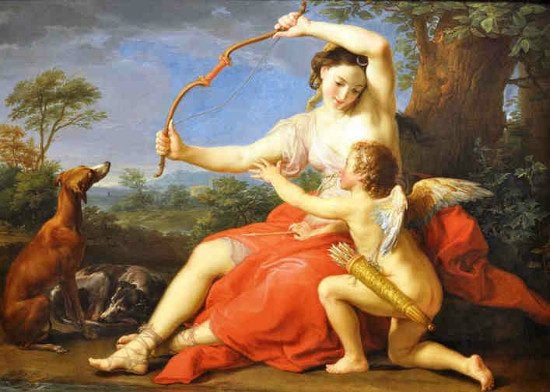
Over the last couple of months I’ve read in several different places that Wiccans are “duotheists” meaning that they acknowledge only one Universal Goddess and a God. That Wiccans are a varied and diversified lot rarely figures into the discussion. Wicca is probably best defined by its rituals, not its theology. As yewtree commented on my Why Wicca post: “Indeed, Gus, in my experience, most of the Wiccans I know are polytheists or animists or pantheists or atheists or ‘I don’t know how it all works but I worship the great mystery’.” My experiences are similar.
Traditional Wiccan groups generally work with two deities that vary from tradition to tradition and/or coven to coven. Away from circle, individual coveners are free to honor, worship, and work with whatever deities they choose. None of those groups would ever make the claim that the different gods honored by a different tradition are somehow “not real” or “invalid.” In Outer Court settings traditional groups often use the terms Lord and Lady because the names of the gods in specific traditions are for initiates only. Eventually the terms Lord and Lady became more than mere placeholders for specific names, Lord and Lady became names unto themselves.
Personally I have always honored a multitude of different gods along with honoring the idea of the Lord and Lady. Use of one doesn’t preclude the use of another. There are times when ritual calls for a specific deity and times when it calls for something more general. The titles Lord and Lady are an easy way to sum up all the various deities that have been honored by Wiccan Witches over the last seventy years. There are also moments when I’ve split the difference between the two in ritual, perhaps by using titles like Goddess of Death or Lord of Light. Ritual is a nuanced thing.
The tag of duotheist is something that’s generally been applied to Wiccans by outsiders (I’ve never run across a Wiccan describing themselves in that manner, but if someone chooses to that’s cool with me), and I became curious as to why. Public Wiccan Ritual does tend to use the terms Lord and Lady/Goddess and God, but it also tends to acknowledge a multiplicity of gods. At Imbolc for instance a ritual with calls to a more composite Lord and Lady might also include a special acknowledgement of Brighid. Duotheism is not something I’ve generally encountered in ritual or in discussions about The Craft, but the idea is expressed in a great many books.

Last night I decided to look at a few “101” type books that either used the words Wicca or articulated a Wiccan-style system to see if the idea of an explicit duotheism can be found within them. To my surprise, the idea was expressed rather specifically. Of course it should be pointed out that no matter how “authoritarian” a book might sound, it only really presents the point of view of the author. A discussion with 100 Wiccans about how they all define their personal practice will generally result in 102 answers, but authors make large footprints.
For the purpose of this article I looked at four different books that have each had a tremendous impact on Modern Wicca as practiced in the United States. (The use of the word in Great Britain still tends to imply an initiatory tradition.) Those four books were Silver Ravenwolf’s To Ride a Silver Broomstick, Raymond Buckland’s Complete Book of Witchcraft, Wicca: A Guide for the Solitary Practitioner by Scott Cunningham, and A Witches Bible by Janet and Stewart Farrar. Those are the books I grew up with as a Witch, as did many of my peers.
The book that had the biggest impact on me personally, A Witches Bible, also backed up my contention that Wicca is a spiritual path best defined by its practices instead of its theology. Indeed, A Witches Bible is extremely short on theology, so short that I couldn’t find anything within it to quote. It’s a book mostly about ritual and what that ritual means. The nature of the goddesses and gods within it are left up for the reader to decide.
I think the idea of letting the reader decide is scary to a lot of authors. If your book is a “complete” look at a topic, it’s most likely difficult to skip an explanation as to the nature of deity. So ideas get boiled down into a few paragraphs and/or pages (as was the case in all of these books). As a blogger I can spit out thousands upon thousands of words on the nature of deity, and I’m not subject to the whims of an editor who wants everything summed up in 1000 words or less.
So let’s have a look at what those authors had to say about the gods . . . . . . .
From Scott Cunningham’s Wicca: A Guide For the Solitary Practitioner:
“Every deity that has received worship upon this planet exists within the archetypal God and Goddess. The complex pantheons of deities which arose in many parts of the world are simply aspects of the two.”
“they are all the Deities that ever were.”
“When envisioning the Goddess and God, many of the Wicca see Them as well-known deities from ancient religions. Diana, Pan, Isis, Hermes, Hina, Tammuz, Hecate, Ishtar, Cerridwen, Thoth, Tara, Aradia, Artemis, Pele, Apollo, . . . . . -the list is virtual endless. Many of these deities, with their corresponding histories, rites and mythic information, furnish the concept of deity for many Wiccans.”
“In these rituals I’ve used the words ‘the God’ and ‘the Goddess’ rather then specific names such as Diana or Pan. Anyone with a special affinity with particular deities should feel free to adapt the rituals in Section III . . . .”
“The Goddess is the universal mother. She is the source of fertility, endless wisdom and loving caresses. As the Wicca know Her, She is often of three aspects: the Maiden, the Mother and the Crone, symbolized in the waxing, full and waning of the Moon. She is at once the unploughed field, the full harvest and the dormant, frost-covered Earth . . . . Since the Goddess is nature, all nature, She is both the Temptress and the Crone; the tornado and the fresh spring rain; the cradle and the grave.”
For the most part Cunningham straddles two lines of thought. All goddesses and gods are part of a greater whole, but he also expresses them as beings unique unto themselves. Mentioning an “affinity with particular deities” certainly implies the adage that “Pan is not Cernunnos.” Cunningham also makes an attempt not to speak in absolutes when he writes “furnish the concept of deity for many Wiccans.” Cunningham’s take on the subject is vastly different from Raymond Buckland’s, much of which I found myself completely disagreeing with.
From Buckland’s Complete Book of Witchcraft by Raymond Buckland:
“There are different rituals, different festivals and even different names for the gods . . . . that I say ‘different names for the gods’ rather than simply, ‘different gods.'”
” . . . in their early development, people came to worship two principle deities: the Horned God of Hunting and the Goddess of Fertility. These, then, were our representations-our understandable forms-of the Supreme Power which actually rules life.”
“With the Goddess, especially, the question of names could become quite involved. For example, a young man with problems in his love life might worship the Goddess in her aspect of a beautiful young woman. Yet a woman in childbirth might feel more at ease relating to the Goddess as a more mature ‘middle-aged’ female. The again an elderly person would tend to think of the Goddess as herself being elderly. So there we have three separate and very distinct aspects of the same Goddess, each having been given a different name yet all being the same deity.”
“What names you use for your deities is a matter of personal preference . . . . . Each tradition has its own name. But names are only labels, they are only a means of identifying. You should identify, then, using a name with which you can feel completely comfortable . . . Even if you join an established tradition this is still valid-find a tradition that seems right for you but . . . don’t be afraid to modify where necessary to make it totally right for you . . . A name as, as I have said, is a label. The God himself knows you are ‘talking’ to him; he’s not going to be confused!”
Since I want to avoid turning this article into a 4,000 word monster let me just express how much I disagree with practically everything here. If someone doesn’t like the “names” of the gods in a specific tradition they should probably leave that tradition instead of “modifying” it. It’s not really a tradition anymore if you can just throw out what you don’t like.
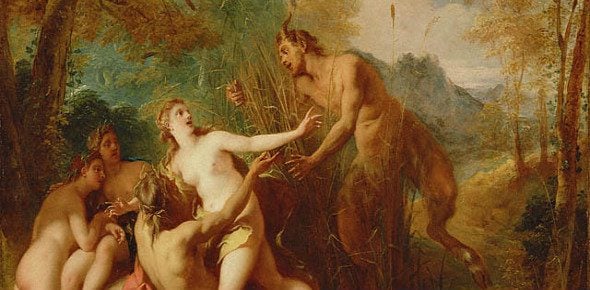
The idea that there are “different names for the gods” rather than simply “different gods” is one I’ve seldom, if ever, encountered. When specific gods are invoked details are generally looked into, details such as “will these two gods get along?” No one has ever said to me “let’s just use the names of Thor and Kail, it’s all the same anyways, and I just think those two gods look cool.” Let me repeat, no one has ever said anything like that to me, ever. I can’t imagine having such things taught to me, or teaching them. Names have power, names have meaning, and they always imply specific things. I guess if one wants to understand where the idea of a “true duotheism” comes from they need look no further than Buckland.
Going into this little project if you had asked me what author I was most likely to disagree with I would have replied with “Ravenwolf,” but just the opposite happened. Her approach to deity is reasonable and she completely gets that “Pan is not Cernunnos.” She recognizes the gods as distinct powers, even if they are all connected.
From To Ride a Silver Broomstick by Silver Ravenwolf:
“One of the most pivotal choices in Witchcraft is your choice of the deities (Gods/Goddesses) you will work with.”
“The Craft gives you the freedom to pick and subsequently honor your own forms of the Divine. Just as you would not call on any doctor when you are sick, you don’t leaf through a book and call on any deity.”
“Look at the deity structure like a family tree . . . . . At the very top of the deity family tree is a glittering sphere of light and energy called the All. It is the essence of every living form from every plane of existance-a thing, yet a non-thing . . . . Down we go then, to the first two branches of the tree, right below the All. Every branch is exaxtly the same, one on the right side of the tree and one on the left. Totally balanced in every respect to each other. The represent the God and the Goddess, or the Lord and Lady. Seperate yet equal, together they combine into the essence of the All. These two images do not carry individual names, as they are representations of the many facets of every God and Goddess ever imagined.”
” . . . . pick a pantheon and stuck with it while learning the Craft. Do not mix pantheons or interachnage deities from different pantheons into the same ritual; you are likely to screw up your magical satellite if you do. In the future, after you have thoroughly studied the different images it is possible to mix deities . . . . .”
Perhaps Ravenwolf’s approach is the result of writing later than Buckland and Cunningham. Cunningham’s Wicca was released in 1989, and Buckland’s Complete has been revised and re-released a number of times. My much dog-eared copy contains copyright dates of 1975, 1977, 1987, along with the date of 1994 for the then eighteenth printing of that book (it was also updated again in 2002). Broomstick was released in 1993, nearly twenty years after the first edition of Buckland’s book. I’m also of the opinion that Ravenwolf is a better writer than Buckland or Cunningham, perhaps that resulted in her being better able to express notions of deity.
So is Wicca duotheistic? For some perhaps it is, though I have never encountered anyone who describes themselves in such a manner. In the end Wicca is probably best defined by its rituals and not its theology. Every Wiccan has to decide for themselves exactly how they interpret the gods, and even then words such as duotheist, animist, and polytheist are probably inadequate to define what to most us is truly a mystery.


